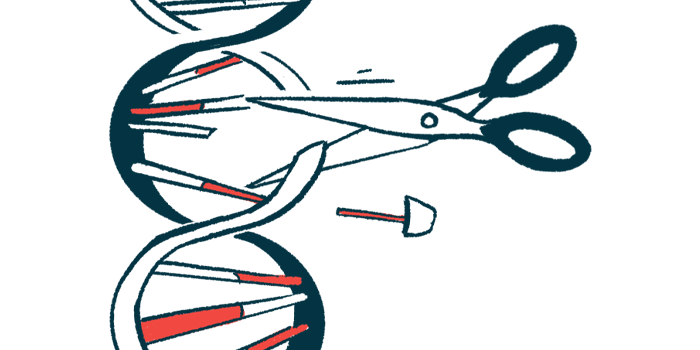Prime editing shows potential to correct sickle cell-causing mutations
New gene-editing approach might be safer than others, but is time consuming

A new gene-editing approach called prime editing was able to selectively correct the genetic deficit underlying sickle cell disease (SCD) in stem cells collected from patients, a recent study reported.
“We were able to directly fix the sickle cell mutation in human hematopoietic stem cells (HSCs) … which we could not directly repair previously with base editors,” Jonathan Yen, PhD, director of laboratory operations for the hematology department at St. Jude Children’s Research Hospital and the study’s co-corresponding author, said in an emailed statement to Sickle Cell Disease News.
HSCs are stem cells that can give rise to all types of blood cells in the body.
Transplanted into mice, the edited cells led to the production of healthy hemoglobin — the protein that’s abnormal in SCD — and less red blood cell sickling in low oxygen conditions, which mark the disease.
Prime editing aims to ‘directly correct’ a gene’s DNA sequences
Findings were in the study “Ex vivo prime editing of patient haematopoietic stem cells rescues sickle-cell disease phenotypes after engraftment in mice,” published in the journal Nature Biomedical Engineering.
“We have identified what might be the next wave of therapies for genetic anemias,” Mitchell Weiss, MD, PhD, chair of the hematology department at St. Jude and a study co-author, said in a university press release.
In SCD, an abnormal version of hemoglobin — the protein that helps red blood cells carry oxygen — is produced as a result of mutations in the HBB gene. As a consequence, red blood cells take on a sickle-like shape and clump together, restricting blood flow and compromising oxygen delivery to tissues.
Approaches to correct these mutations in patients’ own cells are thought to be a promising way of treating or curing SCD, and a number of different approaches are being tested.
But many of these approaches rely on making a type of break in the HBB gene that can lead to unwanted DNA changes at the target site. Other caveats include off-target DNA editing or a need for viral carriers that can compromise a therapy’s safety and effectiveness.
Researchers with St. Jude, the Massachusetts Institute of Technology, and Harvard University in Boston described the development of prime editing, a new gene-editing approach for SCD.
Prime editing employs a sort of “search and replace” strategy, specifically identifying and converting the disease-causing mutation in HBB back to a normal sequence, while avoiding the DNA breaks that can be problematic.
“Prime editing is a promising approach because, in theory, we can directly correct disease mutations to specific healthy DNA sequences of our choosing,” Yen said.
In blood stem cells from SCD patients, prime editing was able to efficiently and specifically correct the genetic deficit in the HBB gene, with a conversion of 15% to 41%. Of note, previous research indicates that correcting at least 20% of mutated cells is likely to be of therapeutic benefit to patients.
Normal hemoglobin production seen in mice given the edited stem cells
In mice, the edited patient stem cells successfully repopulated the animals’ bone marrow with blood cells that could produce healthy hemoglobin.
Specifically, normal hemoglobin production was observed in an average of 42% of circulating red blood cells at 17 weeks after the transplant, again exceeding the levels expected for therapeutic benefit.
When placed in the low-oxygen environment known to induce red blood cell sickling in SCD, cells from transplanted mice exhibited, on average, significantly less sickling than those from animals not given a transplant (37% vs. 63%).
“These findings are among the first to establish therapeutic prime editing of HSCs, collectively suggesting that prime editing and transplanting patient HSPCs may represent a promising therapeutic strategy as a one-time … treatment for SCD,” the researchers concluded.
Potential limitations to this approach its time-consuming nature, with each step in the process needing adaptation and optimization, they added. The team also noted that, while very little off-target editing was observed, more studies are needed to ensure its safety.
“We are doing our best to predict toxicity, but we won’t know the true extent of the risks of this therapy until it is used in patients,” Weiss said.
Prime editing may have benefits beyond SCD.
“Because of its unique versatility, prime editing has the potential to cure many more genetic diseases,” Yen said. “It will be a challenge to get to the clinic. It will require extensive manufacturing development, process optimization and safety assessment. But the proof of concept is there. Our work now opens the door to developing cures for many hematological diseases.”







